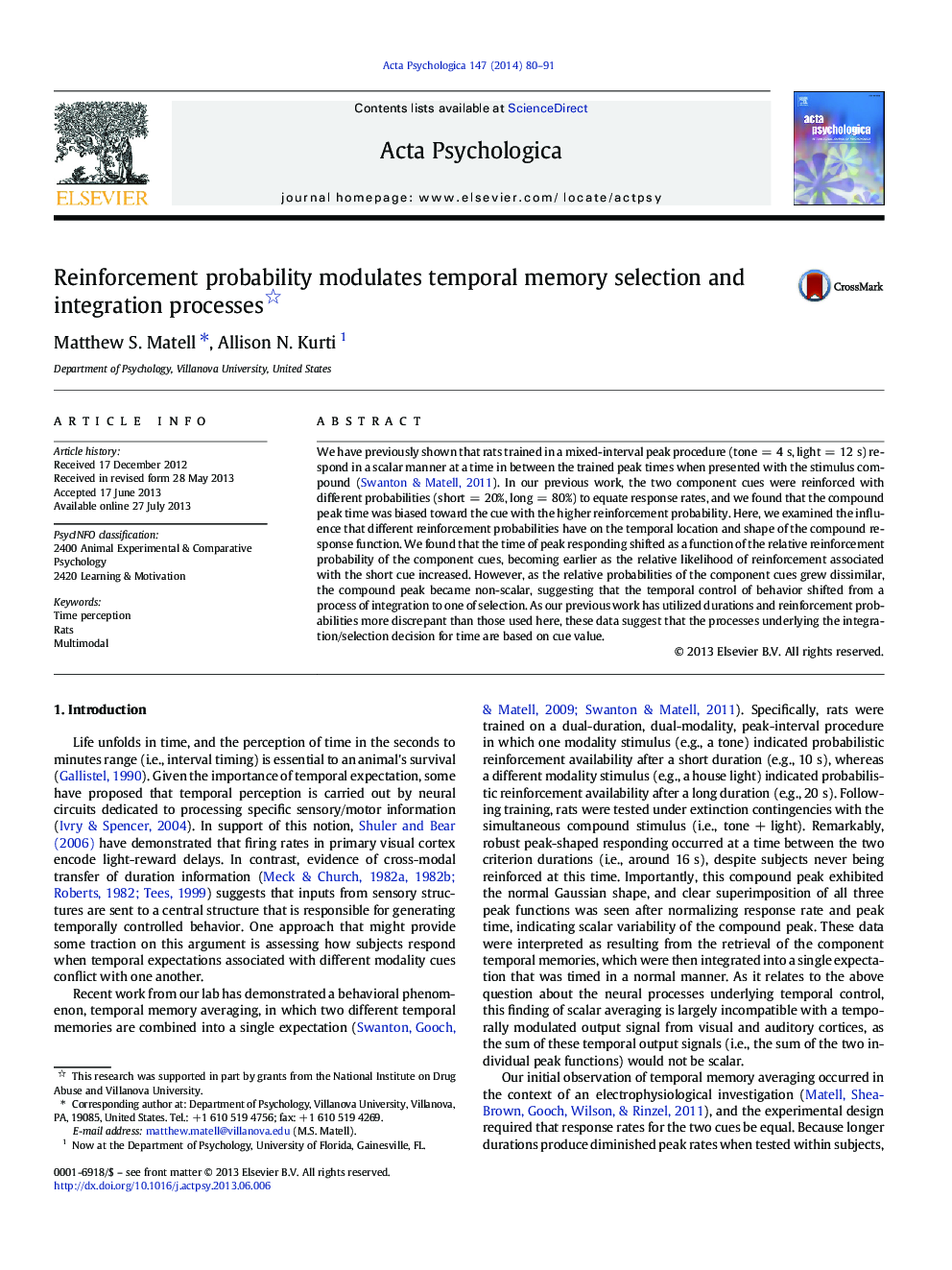| Article ID | Journal | Published Year | Pages | File Type |
|---|---|---|---|---|
| 7277922 | Acta Psychologica | 2014 | 12 Pages |
Abstract
We have previously shown that rats trained in a mixed-interval peak procedure (tone = 4 s, light = 12 s) respond in a scalar manner at a time in between the trained peak times when presented with the stimulus compound (Swanton & Matell, 2011). In our previous work, the two component cues were reinforced with different probabilities (short = 20%, long = 80%) to equate response rates, and we found that the compound peak time was biased toward the cue with the higher reinforcement probability. Here, we examined the influence that different reinforcement probabilities have on the temporal location and shape of the compound response function. We found that the time of peak responding shifted as a function of the relative reinforcement probability of the component cues, becoming earlier as the relative likelihood of reinforcement associated with the short cue increased. However, as the relative probabilities of the component cues grew dissimilar, the compound peak became non-scalar, suggesting that the temporal control of behavior shifted from a process of integration to one of selection. As our previous work has utilized durations and reinforcement probabilities more discrepant than those used here, these data suggest that the processes underlying the integration/selection decision for time are based on cue value.
Keywords
Related Topics
Life Sciences
Neuroscience
Cognitive Neuroscience
Authors
Matthew S. Matell, Allison N. Kurti,
